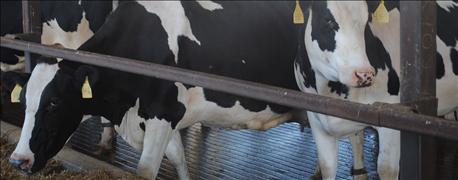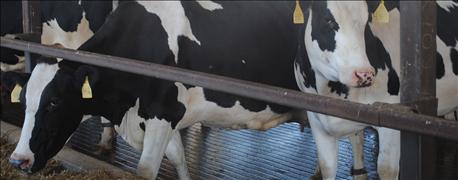
Robotics isn't in the cards for every dairy producer, but it is a technology being looked at closely by producers throughout the industry to save on labor management and potentially improve production. "We are seeing robots being installed on all sizes of dairies from 70 milking cows and larger," says Nebraska Dairy Extension educator Kim Clark. There are several considerations, pros and cons, for adding robotics to a dairy, Clark says. Here are a few of Clark's major considerations:
Cost. Clark says there are several cost-related questions to answer. What is the total cost? How long will it take to pay off the investment? How many robots are needed?
 MORE MILK: According to Nebraska Dairy Extension educator Kim Clark, robots can add up to 20% in milk production, but there are trade-offs because of large initial investment and continued need for managers for production and animal health.
MORE MILK: According to Nebraska Dairy Extension educator Kim Clark, robots can add up to 20% in milk production, but there are trade-offs because of large initial investment and continued need for managers for production and animal health.
What's the point? Why is the producer considering robots to begin with? "Some may be considering robots from the labor side, whether it is hired labor or family labor," she explains. "If it is family labor, most of the time, producers are thinking about robots to free up their labor from milking to use in another area and even to give the family more time together," she says.
What changes will be needed to facilities to add robots? "Some facilities will easily be adaptable for robots, while other producers will need new facilities," Clark notes.
Is operation expansion on the horizon? It is important for the producer to know what capacity they want to be milking five, 10 or 15 years from now. "It is easiest to plan for this during the initial planning for the robots," Clark says.
Some of the positive aspects of robotics include as much as a 20% increase in milk production, because the cows are milking more frequently, resulting in additional production and potentially added revenue. "The amount of hired labor can be decreased, but there is a shift in management style," Clark says. "Generally, one to two people can evaluate milk production and animal health each day."
She says that robots do more than just milk cows. They can also monitor animal activity, rumination, weight and animal records, recorded electronically in one place.
But the initial investment is large. "If a producer has plans to expand the herd, it is important to know these plans so facilities with the robots can be built accordingly," Clark says. "New facilities may have to be built if existing facilities cannot be adapted for robots," she notes. "Also, the systems are very dependent on computers and if there is a hiccup in the system, it needs to be fixed right away. And there isn't always a robot representative in the area that can fix the issue," she adds.
"Robots are for everyone that wants to make the investment and shift their labor management. But it is important to remember there is still a need for labor when it comes to the milking herd," Clark says. "The farm labor becomes more of a manager, assessing milk production, feed consumption, bedding the stalls, animal hygiene and overall health management on a daily basis." Clark says adding robotics basically moves their milkers to a position as animal care and performance managers.
You can learn more about robotics in dairying in Nebraska by contacting Clark at [email protected].
About the Author(s)
You May Also Like






